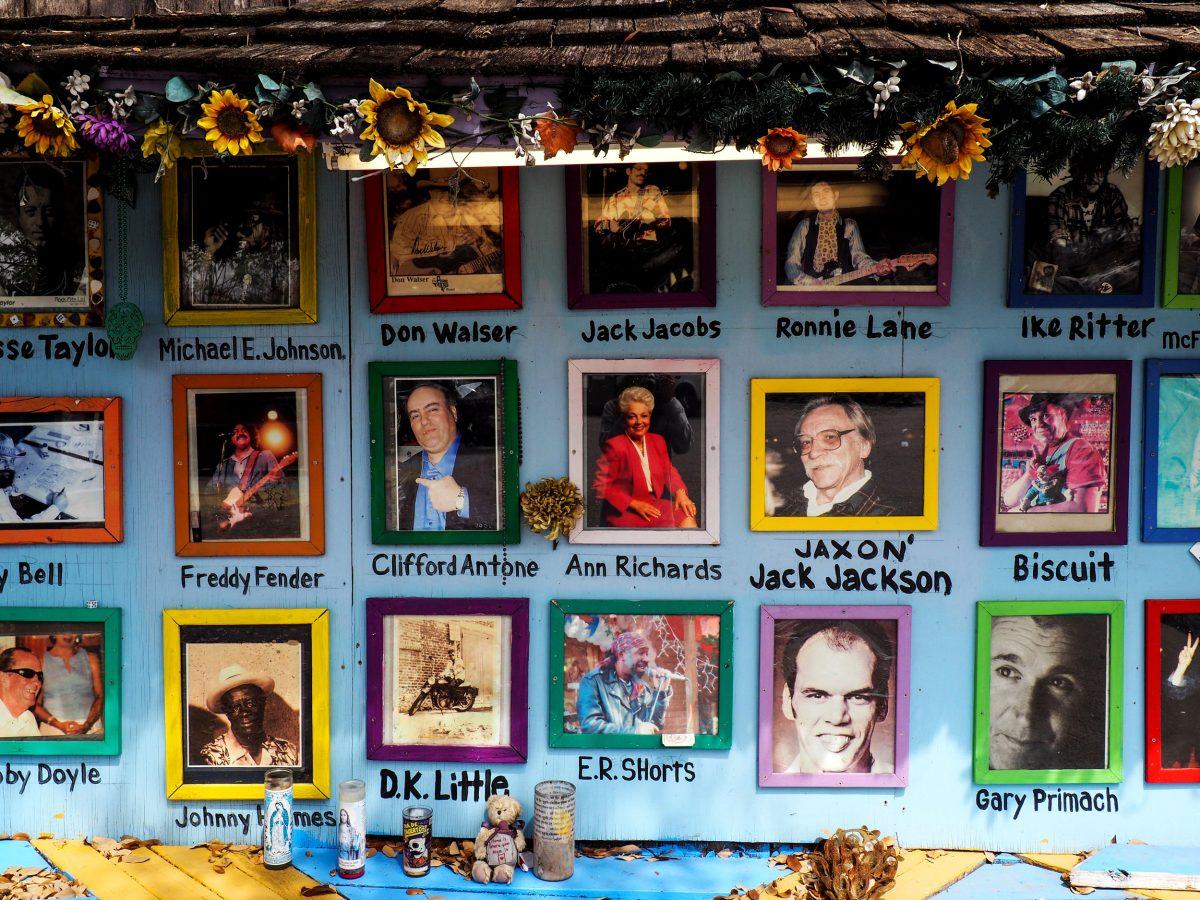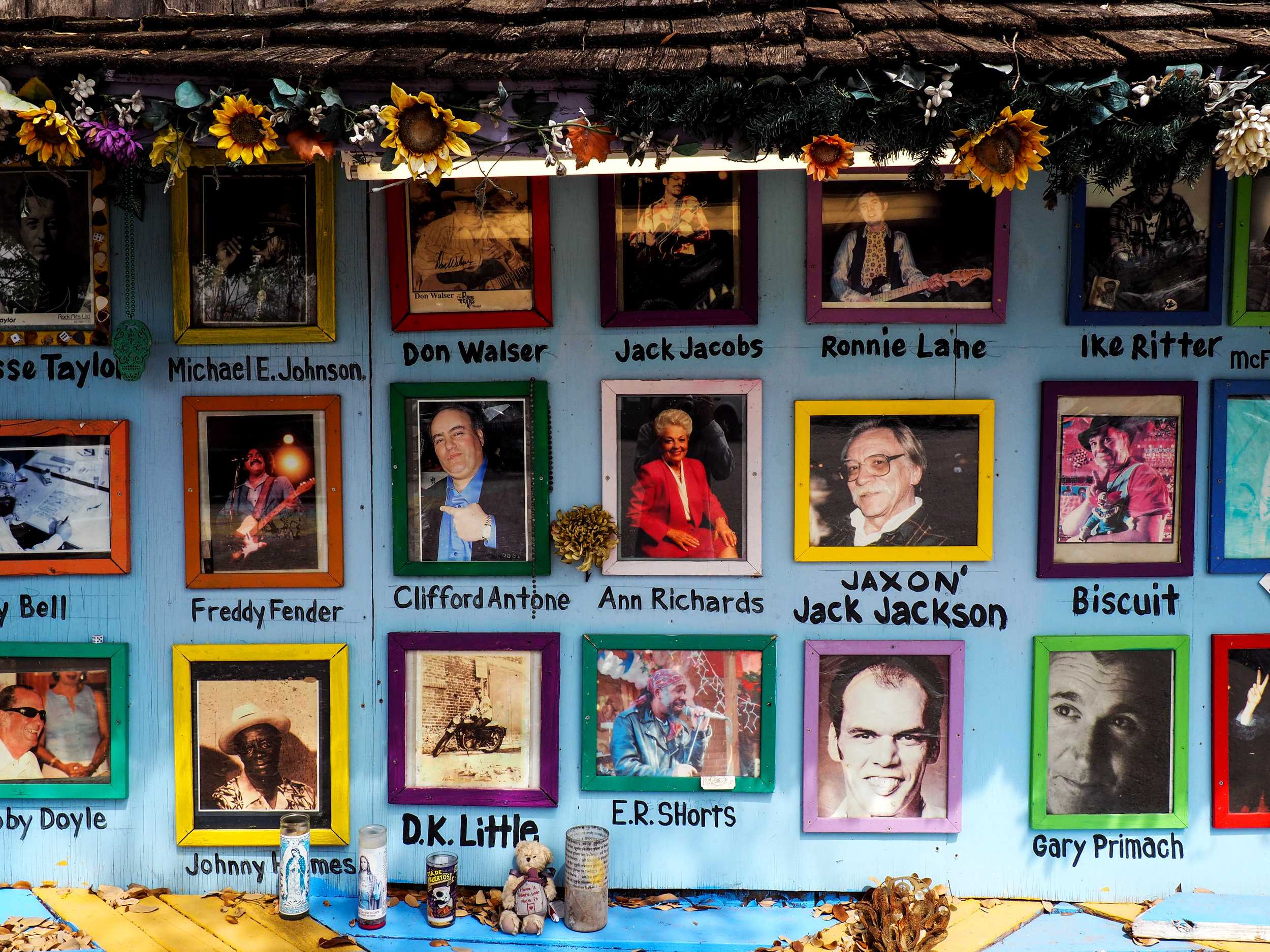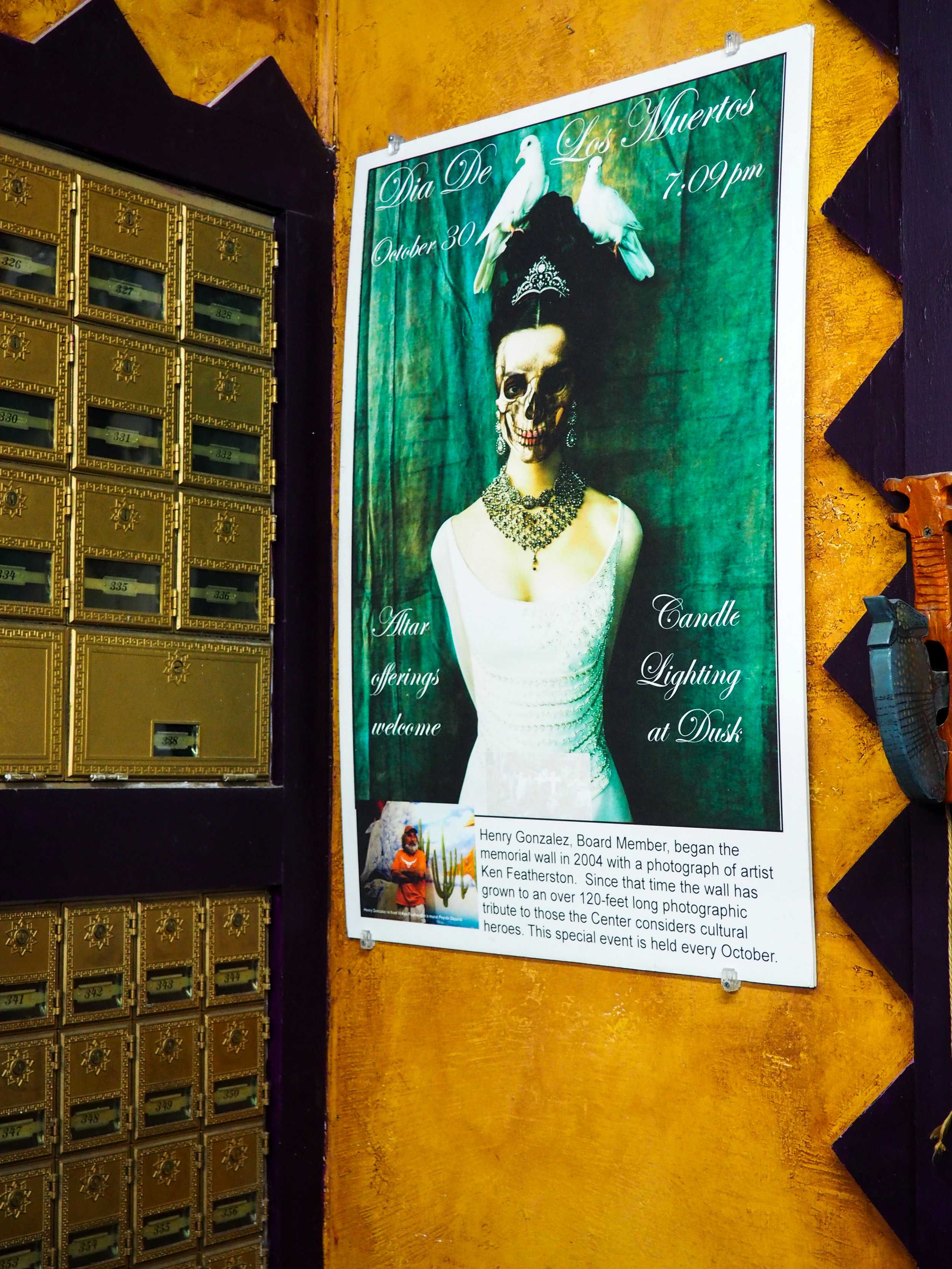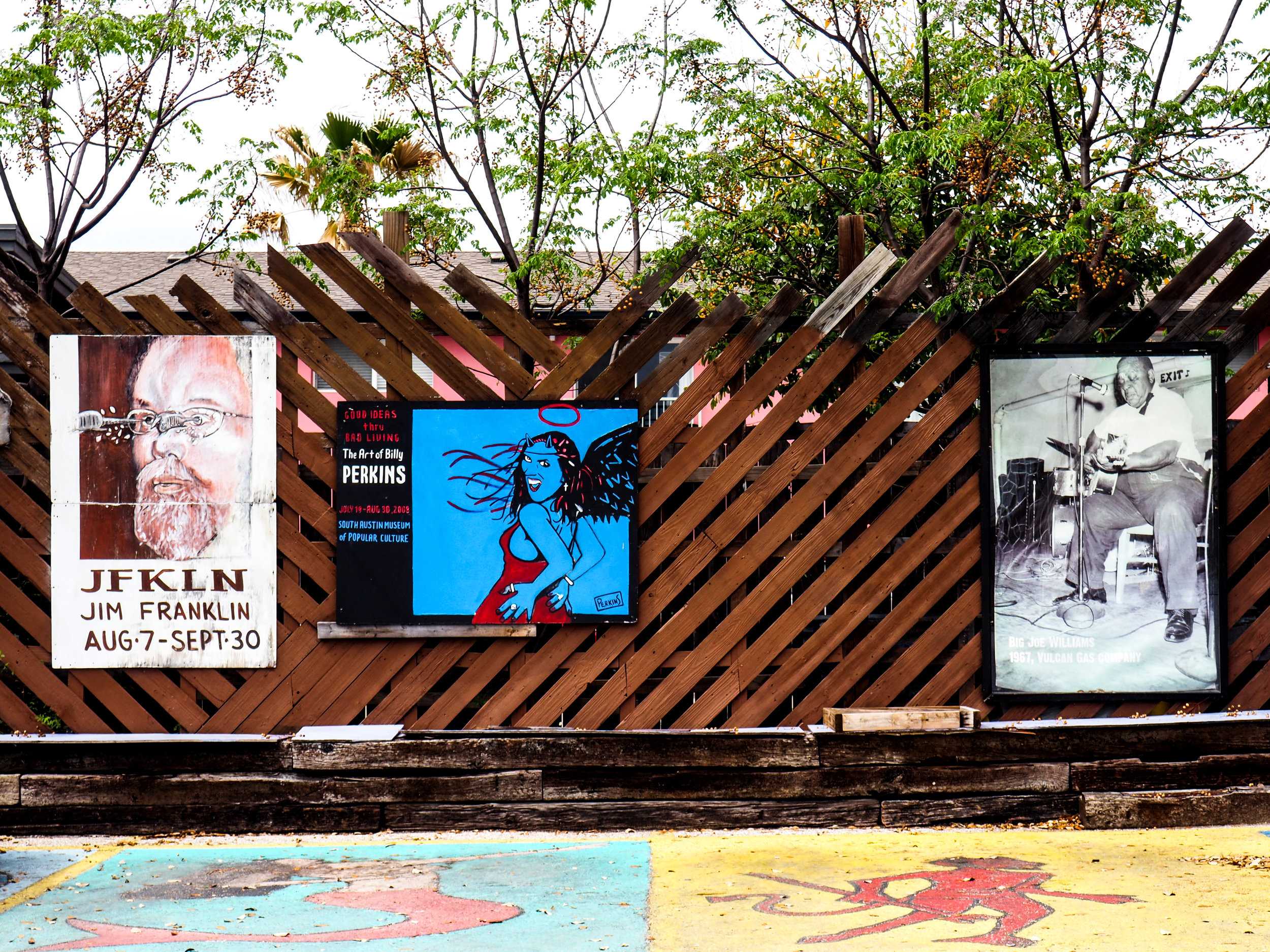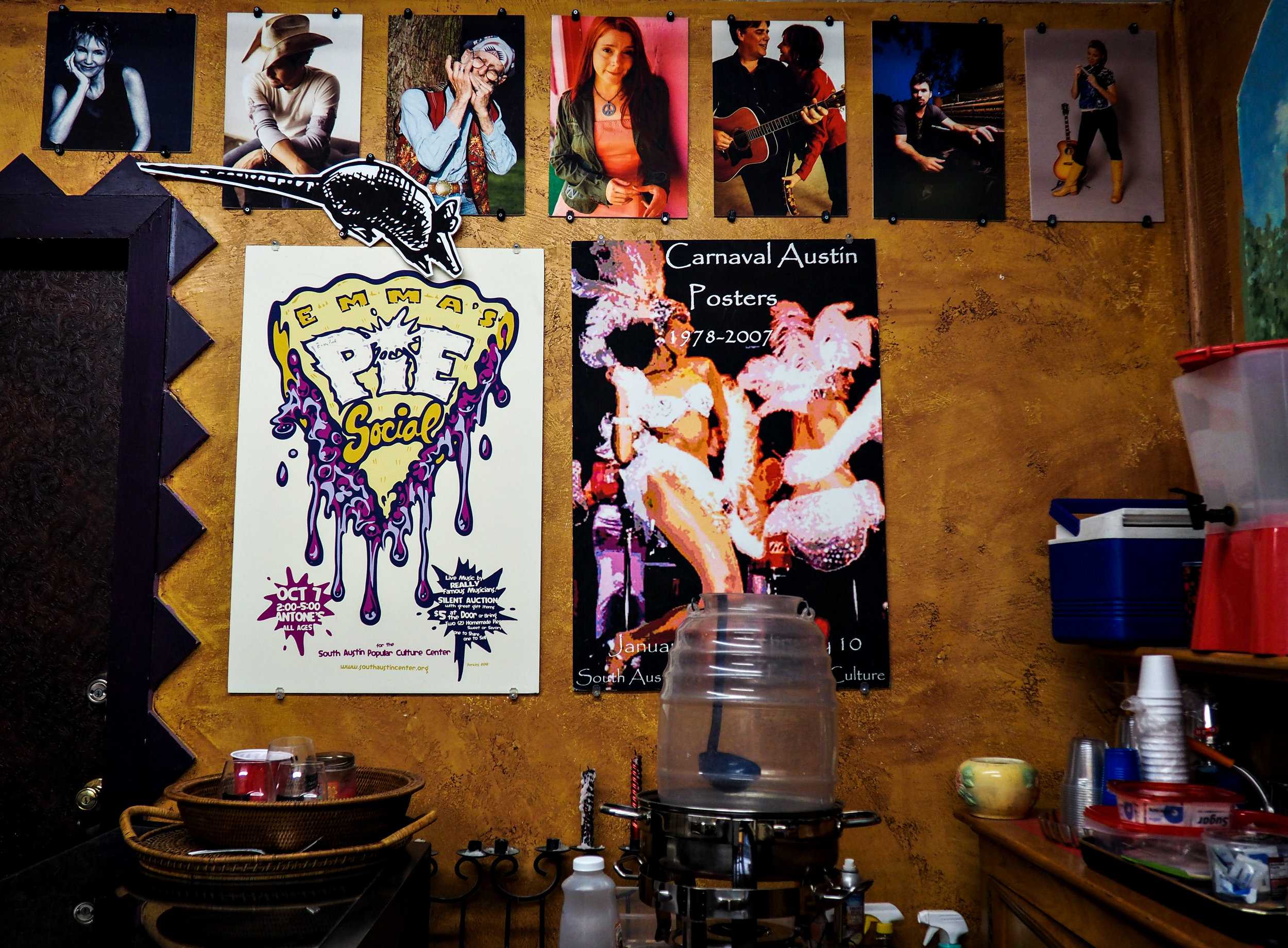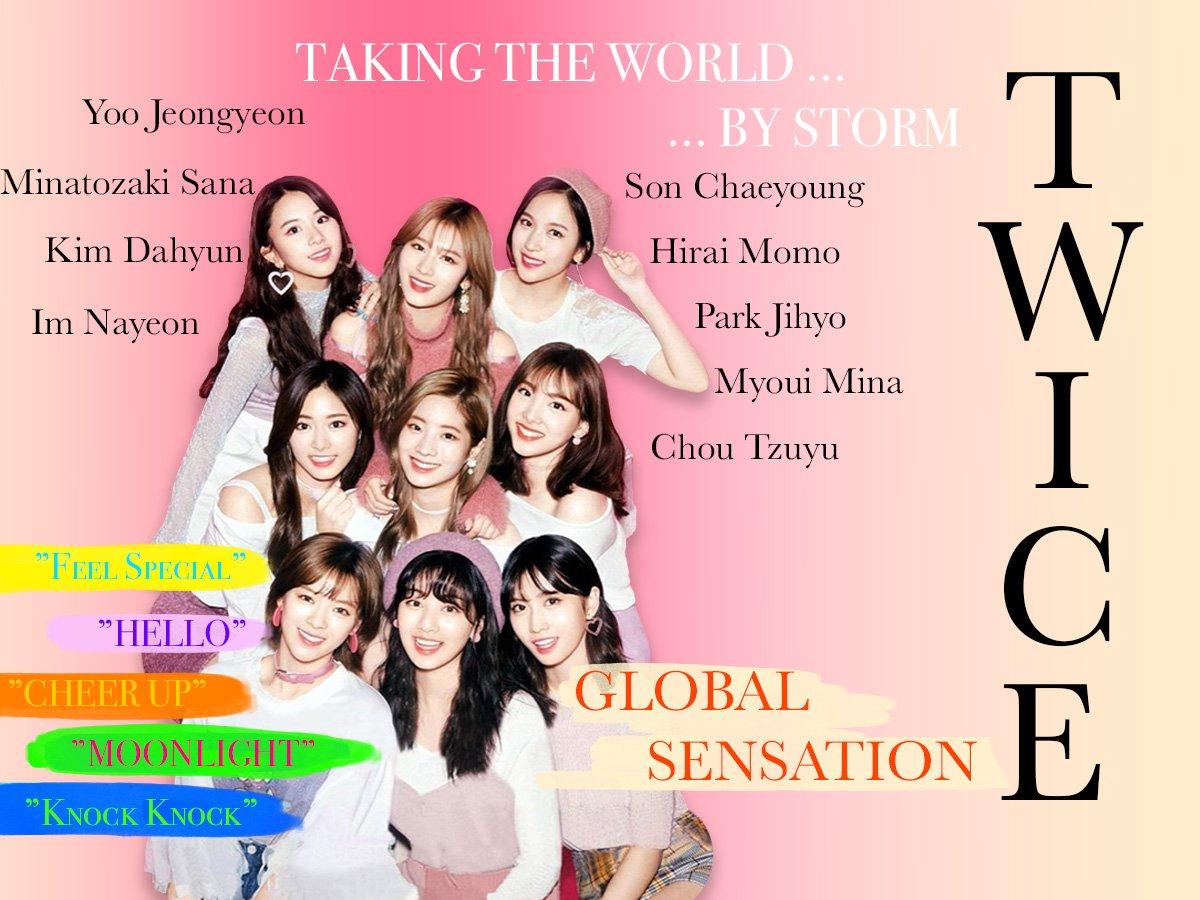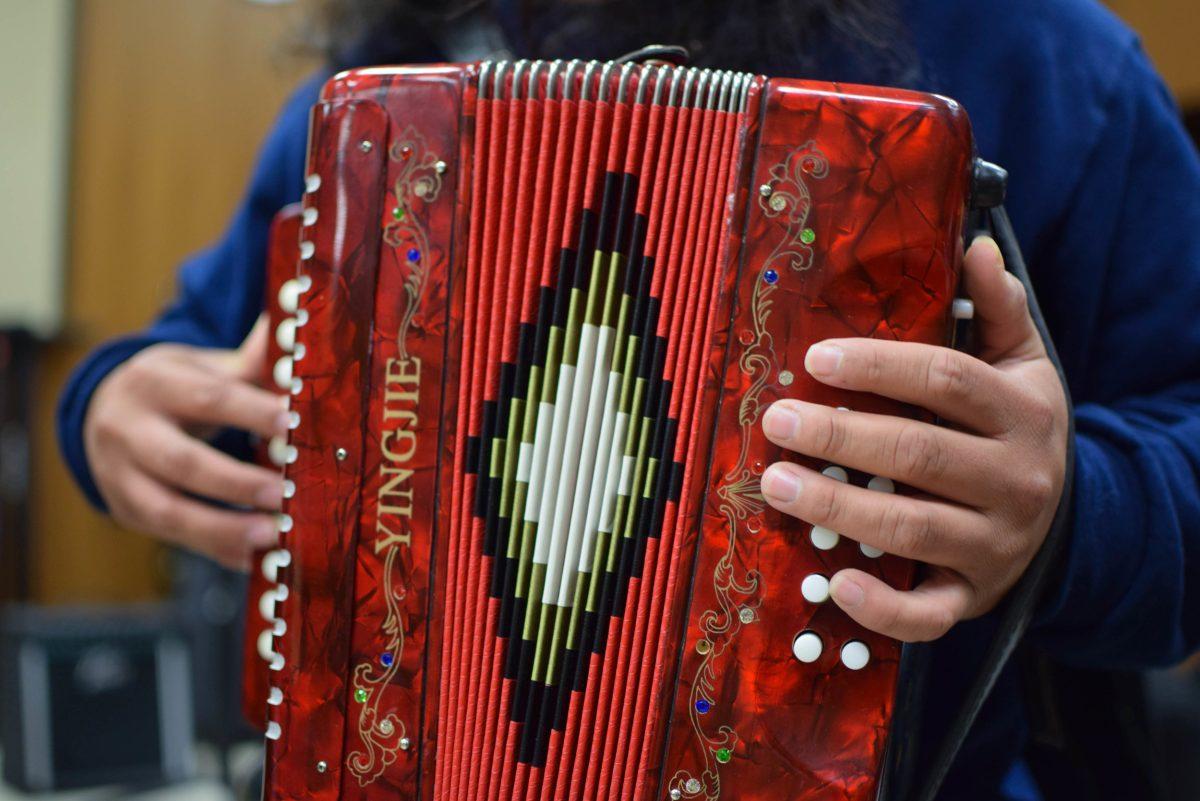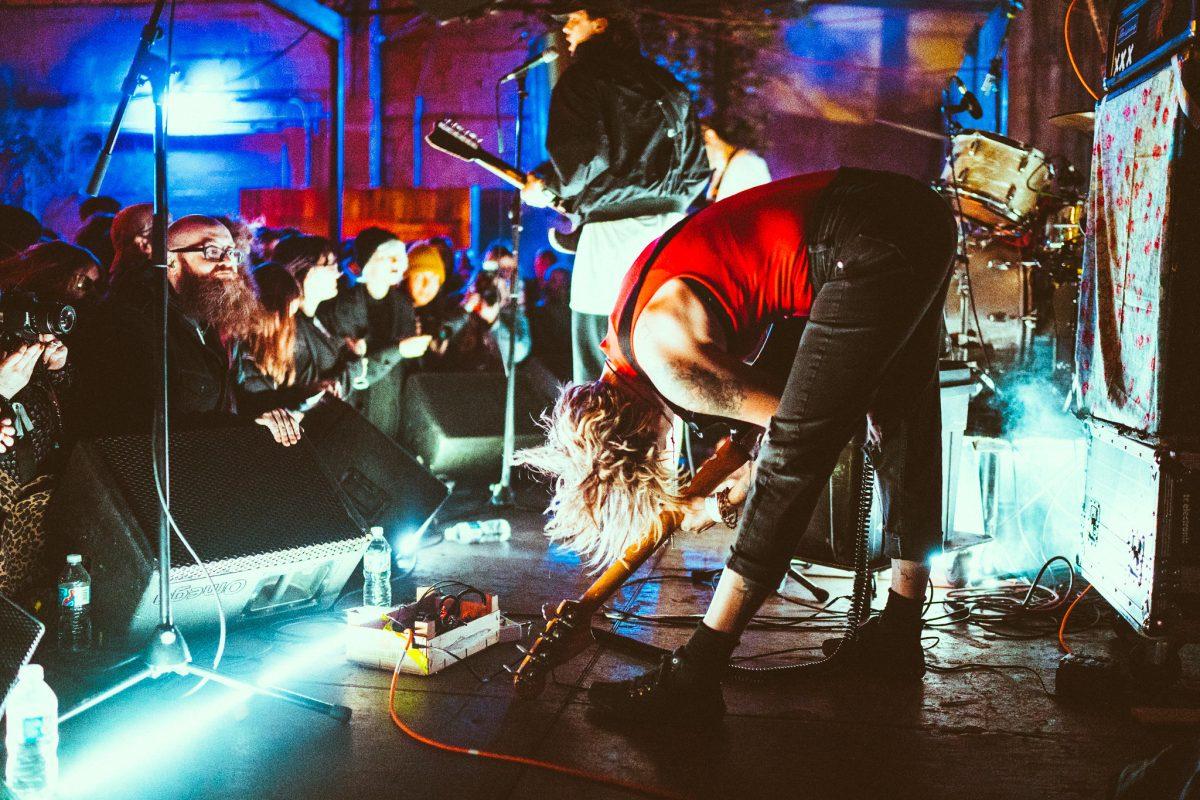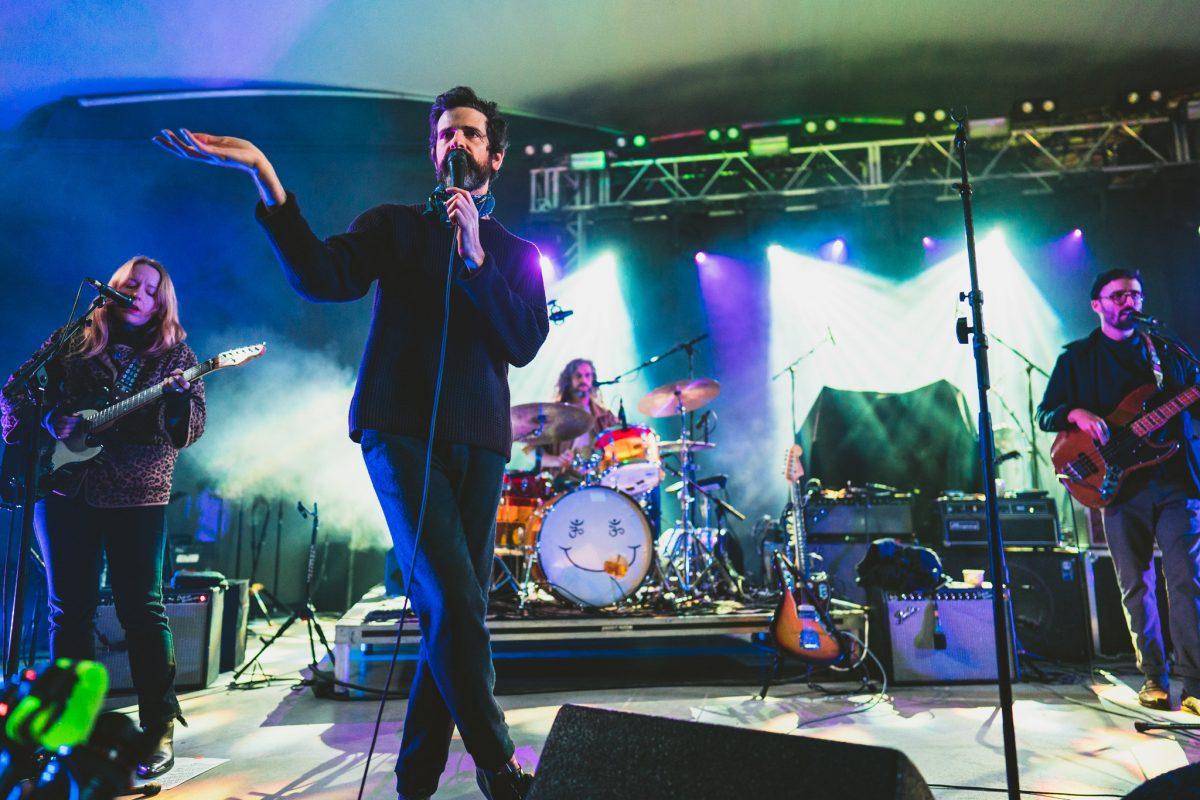The South Austin Museum of Pop Culture is decorated with posters and pictures of great past artists.
Defined by its rambunctious sounds and rebellious attitude, it is an anti-normal culture curated by music, art and a close community. This is punk rock.
Story by Jennifer Hernandez
Photos by Marybeth Schmidt
Celebrating the Day of the Dead at the South Austin Museum of Pop Culture.
Since its inception, punk rock has played a significant role in the Austin music scene. In 1978, The Sex Pistols played a show in San Antonio at a country bar to which many Austinites flocked to see. From that point forward, punk emerged as a new musical force within the city.
Punk rock refuses to fit in, seeing as numerous bands like to experiment with other genres like country or reggae. Dylan Close of Austin band Sniper 66 says his band plays a “niche style” of punk that intertwines itself with other sub-genres. “At the end of the day, it’s all rock and roll, and that’s the way I like it,” Close says.
At the South Austin Museum of Pop Culture, visitors can walk into Punk Town, an exhibit currently featuring a vibrant collection of photos and poster art which honor the past, present and future of the local punk rock scene. Museum Director Leea Mechling believes the exhibit will help visitors learn a great deal of punk rock’s contribution to music both within Austin and outside of the city. “By looking at the display walls where we have items from the earlier stages of punk and then seeing the features we’ve done on half a dozen current bands who are playing, they can really see the evolution,” Mechling says. “They’re gonna get some really good information about why punk music came to be and how that evolved from each coast, across the ocean and through this part of the nation.”
What makes the Austin punk rock scene unique is that it brings many people together who share a love for the same music. Even those who are unfamiliar or are relatively new to Austin punk rock can find a place in the community. Ryan Johnson, guitarist for The Punks on Parade has been in Austin for five years now and is familiar with both the Minnesota punk scene and now the Austin scene. “It’s very similar everywhere you go, depending on the type of friends that you make,” Johnson says. “There’s a whole lot of community and tons of compassion for other people. It’s such a small knit group of people that take care of one another.”
The museum has colorful posters and artistic parking spots.
While true to its roots in some aspects, the punk rock genre has in some ways evolved since its birth. At first, many bands were anti-everything and sometimes violent. Today, the radical style of punk rock lives, but has shifted its focus to more social issues such as racism and the wealth gap.
The future of the world depends on the next generation and the same thing can be said about punk rock. Phil Tink, guitarist for The Punks on Parade has seen an absence of certain audiences at his shows. “There’s a lot of love and a lot of fun, but there’s a real lack of younger people on the scene, and that’s the biggest thing that I’ve noticed,” Tink says. “Although, there does seem to be a resurgence happening right now.”
Whether one braves the mosh pit at a local punk rock show or sees the wild poster art at Punk Town, it’s never too late to start following punk music and its loyal subculture.
The museum is decorated with posters and pictures of great past artists.































